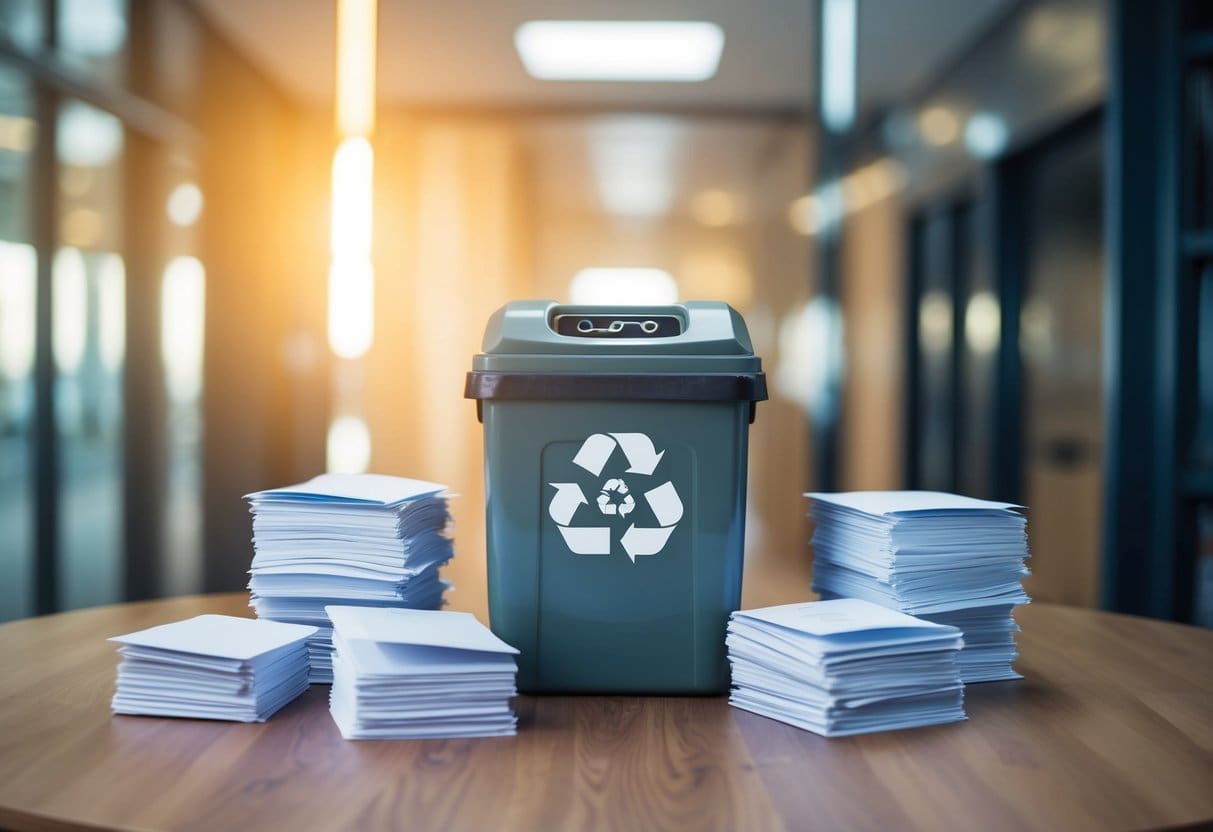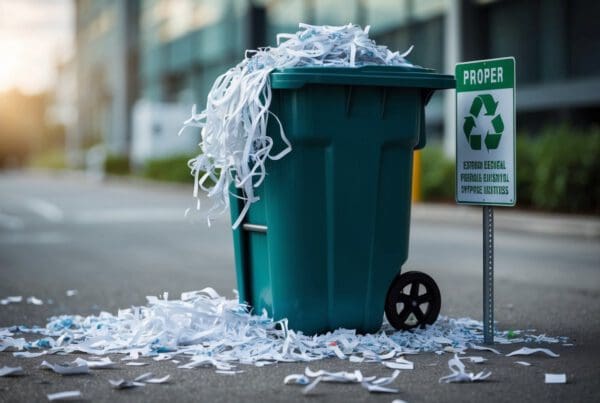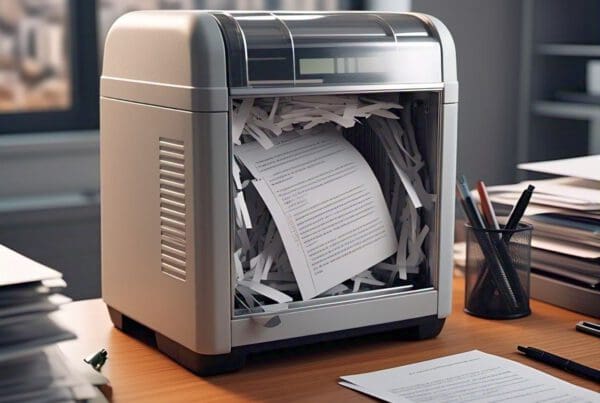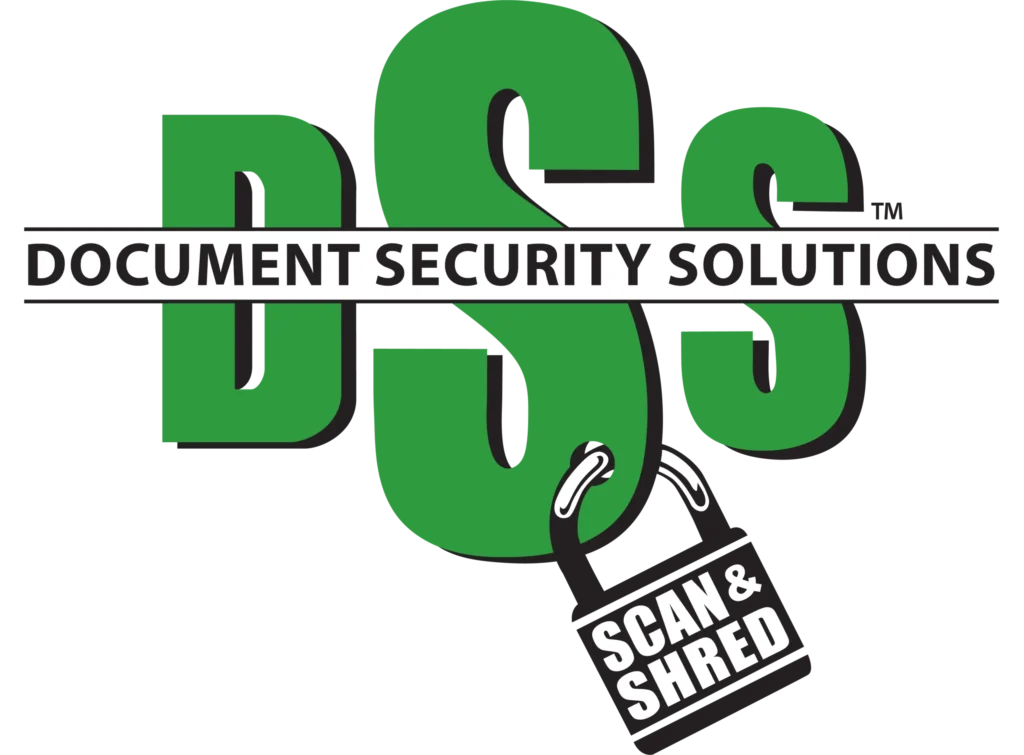Understanding Shredded Paper Disposal
When it comes to shredded paper disposal, understanding the different aspects can help us make eco-friendly choices. We need to consider how shredding affects recyclability and its environmental impact.
Basics of Paper Shredding
Shredding paper is a common method to destroy sensitive information. It involves cutting paper into thin strips or confetti-like pieces. This process helps protect privacy by making it hard to reconstruct documents.
Various shredders are available, from simple strip-cut to advanced cross-cut models. Choosing the right type depends on the level of security needed. High-security shredders create smaller pieces, offering more protection but producing waste that’s harder to recycle.
Shredded Paper: Recyclable or Not?
Recycling shredded paper can be tricky. Many recycling facilities have guidelines that differ from city to city. Shredded paper is less desirable for recycling because its fibers are shorter, leading to lower-quality recycled products.
Some facilities accept shredded paper, but it often needs to be bagged separately. We should check local rules to avoid contamination in recycling bins. Sometimes, using shredded paper for composting or as packing material can be a better option.
Environmental Impact of Paper Disposal
Disposal of shredded paper has environmental consequences. If not handled correctly, it might end up in landfills, contributing to waste and pollution. Using eco-friendly alternatives can reduce this impact.
Sustainability efforts include reducing paper use and opting for digital alternatives. By understanding recycling guidelines and the importance of fiber length, we can choose methods that support environmental health. Supporting businesses that use recycled paper products is another way to promote sustainability.
Making informed decisions in our disposal practices not only protects our privacy but also represents a step toward a more sustainable future.
Preparing Shredded Paper for Recycling

To recycle shredded paper effectively, it’s crucial to manage how we sort and store it, understand the impact of contamination, and follow local guidelines. Each step contributes to a smoother recycling process and a more sustainable outcome.
Sorting and Storage Best Practices
Proper sorting and storage of shredded paper are key to ensuring it can be recycled. We should separate shredded paper from other types of paper to prevent contamination.
Using paper bags for storage can be beneficial as many recycling facilities accept shredded paper this way. Unlike plastic bags, paper bags are recyclable and won’t hinder the recycling process. Labeling the bags clearly ensures they are easily identifiable at the recycling facility.
Additionally, we should keep shredded paper dry. Moisture can cause issues, such as mold, which affects the recycling process. It’s critical to store shredded paper indoors or in dry locations to avoid any problems.
Contamination and Recycling Efficiency
Contamination is a major issue in the recycling process, as it affects efficiency and quality. When recyclables are contaminated, they might not get processed. This is particularly true for shredded paper because of its small size and potential to mix with other materials.
We must avoid mixing shredded paper with plastics or food waste. Even small amounts of non-paper materials can lead recyclers to reject the entire batch. Moreover, removing staples and other metal fasteners ensures a smoother recycling journey.
Taking these precautions helps maximize recycling rates and ensures shredded paper is turned into new products.
Local Recycling Guidelines and Policies
Understanding local recycling guidelines is vital. Many areas have specific rules regarding shredded paper. We should check our local waste management policies to know how to prepare shredded paper for collection.
Some communities require shredded paper to be dropped off directly at a recycling center. Others might accept it with regular curbside recycling, provided it is stored correctly.
Being aware of these guidelines ensures we comply with local policies, making recycling efforts more effective. By adhering to local protocols, we support a more sustainable recycling system and contribute to a cleaner environment.
Innovative Uses for Shredded Paper

There are many ways to make shredded paper useful. We can compost it to enrich soil, transform it into creative projects, or use it for packing and pet bedding. Each approach offers unique benefits, helping us minimize waste and utilize resources efficiently.
Composting with Shredded Paper
Shredded paper serves as an excellent carbon source, or “brown” material, in our composting efforts. Balancing the nitrogen-rich “green” materials, like food scraps and grass clippings, is key.
We mix the shredded paper with other compost materials to create a balanced and nutrient-rich compost. It’s important to use non-glossy, uncoated paper, as these break down easier and don’t introduce unwanted chemicals into the compost. This will help improve soil quality and promote healthier plant growth.
Creative DIY Crafts and Projects
Shredded paper is a versatile material for DIY craft projects. It’s easy to shape, mold, and color, making it ideal for creating decorative items like papier-mâché sculptures, homemade paper, or festive garlands.
We can also use it for educational projects with kids, offering them a fun, eco-friendly way to explore creativity. Shredded paper is recyclable, so we’re also promoting sustainability by reusing materials instead of discarding them.
Repurposing as Packing Material and Pet Bedding
Another practical use for shredded paper is recycling it as packing material or bedding for pets. It provides cushioning and protection for fragile items during shipping.
As pet bedding, it is absorbent and soft, providing a comfortable environment for small animals like guinea pigs or rabbits. It’s important to ensure the paper used is free from harmful inks and chemicals. This method reduces waste and offers a cost-effective alternative to commercial packing and bedding products.
Shredded Paper Collection and Take-Back Programs
In our shredded paper disposal plan, we explore various methods of collection and recycling. These include curbside services, community initiatives, and partnerships with recycling centers.
Curbside Collection Services
Many localities offer curbside recycling as part of their regular trash collection services. We should check with our local waste management company to see if shredded paper is accepted.
Some services offer special bags or containers just for paper. This makes separation and handling more accessible. It’s important to follow local guidelines for how shredded paper should be packaged, often requiring it to be in a secured paper bag or a clear plastic bag.
Locations with curbside pickup may have restrictions on the size or quantity of shredded paper. Staying informed about these limits ensures efficient disposal. If this service is available, it can offer a convenient and eco-friendly option.
Corporate and Community Recycling Initiatives
We can participate in recycling programs organized by corporations or community groups. Many companies run periodic take-back programs, where they collect shredded paper from employees or customers.
Community groups may host monthly or annual recycling events. They often accept large amounts of shredded paper, making them a practical choice for businesses. Participating in these programs supports communal environmental efforts.
These initiatives often partner with professional shredding services, enhancing security and recycling efficiency. We may need to coordinate with our company or local groups to take advantage of such efforts.
Partnering with Recycling Centers
Working directly with recycling centers can be beneficial for efficiently recycling shredded paper. We can contact local centers to find out their specific requirements and acceptable materials.
Recycling centers may have a drop-off point where we can take shredded paper. They usually provide guidelines on how to prepare the paper, such as securing it in a bag or box.
Some centers collaborate with waste management for take-back programs, making it easier for community members to dispose of shredded materials correctly. Establishing a connection with a recycling center can guarantee that our shredded paper is recycled properly and sustainably.
Best Practices for Secure Paper Disposal
When handling shredded paper disposal, we must ensure sensitive information remains protected. It’s crucial to adopt responsible recycling methods and consider professional shredding options. Compliance with legal and environmental standards not only aids in minimizing landfill waste but also protects from unforeseen legal issues.
Handling Sensitive Documents
We must first identify documents containing sensitive information. This includes personal details, financial records, and confidential contracts. It’s important to separate these from regular junk mail and non-sensitive paper.
Using a reliable paper shredder is critical. This tool can effectively destroy sensitive information. It’s advisable to choose a micro-cut shredder, as it offers more security than strip-cut or cross-cut models. By doing this, we make it difficult for anyone to reconstruct documents.
Once shredded, paper can be placed in separate bags and marked for secure recycling. This helps ensure sensitive materials aren’t accidentally mixed with regular recycling, which can prevent environmental protection issues.
Professional Shredding Services
Professional shredding services offer a higher level of security for disposing of shredded documents. We can trust these services to handle large quantities of paper while ensuring that sensitive information remains confidential.
They usually provide shredding on-site or off-site options. On-site shredding allows us to oversee the process, while off-site can be more cost-effective. Either choice ensures proper shredding and disposal, often followed by delivering a certificate of destruction for verification.
These companies also provide secure bins for paper collection, reducing the risk of unauthorized access before shredding. The shredded paper is then sent for recycling, helping to cut down on landfill waste.
Compliance with Legal and Environmental Standards
Compliance with relevant laws is key in our shredded paper disposal plan. Regulations often guide how we must handle and dispose of sensitive information to avoid breaches. We should familiarize ourselves with laws like the General Data Protection Regulation (GDPR) or local data protection regulations.
Environmental protection is also crucial. Recycling shredded paper can reduce our carbon footprint. It’s important to choose recycling facilities that adhere to environmental standards, thus helping to diminish landfill waste. By doing so, we can balance effective disposal with eco-friendly practices.





